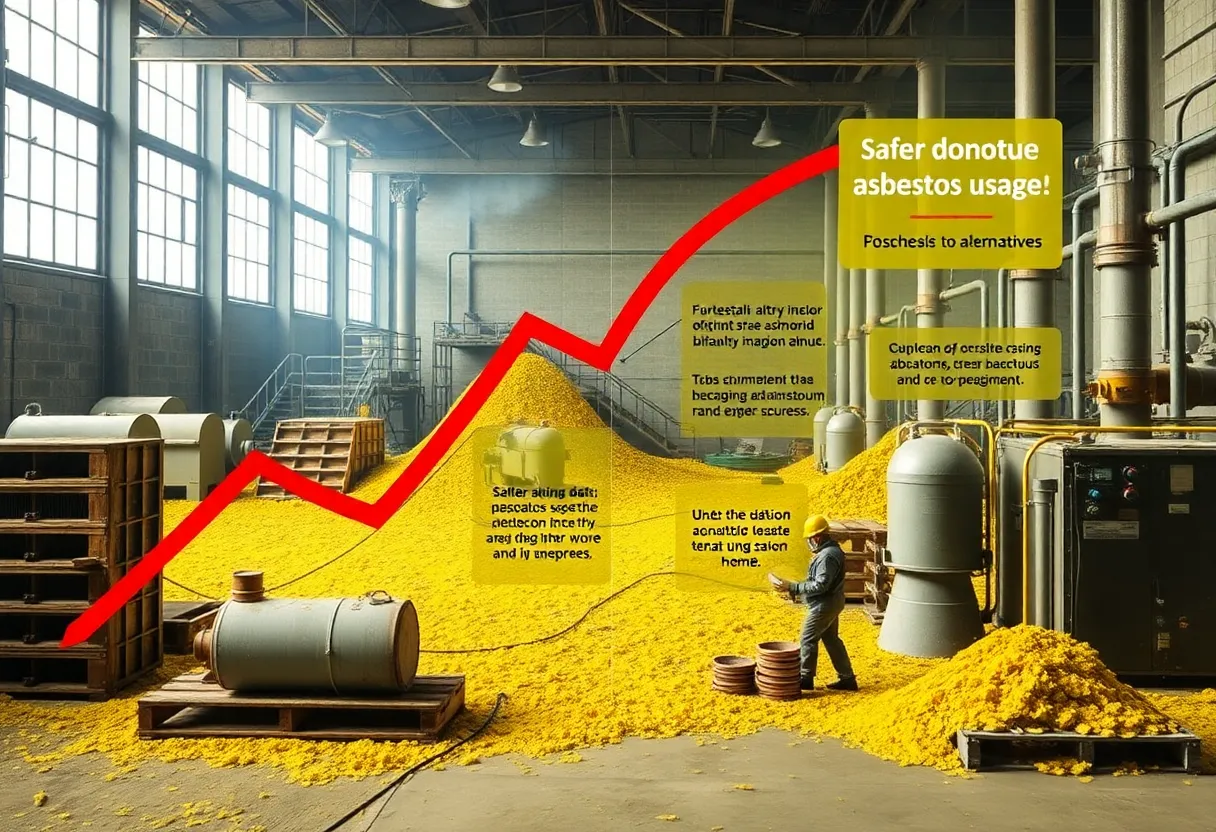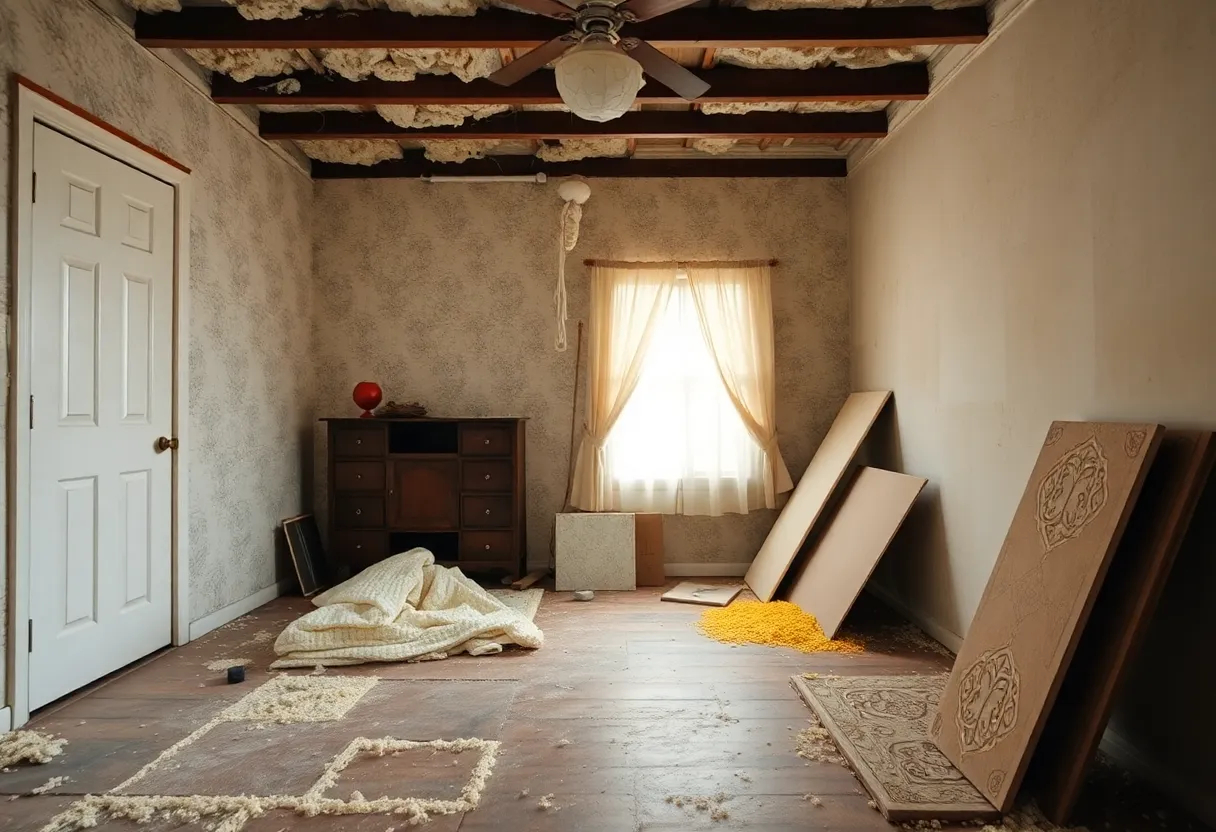News Summary
The U.S. Geological Survey’s 2025 report reveals a staggering decline in asbestos use in the U.S., with consumption falling to just 110 metric tons in 2024. This reflects a significant regulatory shift and growing public concern over asbestos-related health risks. The EPA’s March 2024 ruling banning all uses of chrysotile asbestos is pivotal, though ongoing industry practices and potential regulatory rollbacks raise questions about future safety. As public awareness increases, litigation continues to play a crucial role in uncovering the dangers associated with asbestos exposure, highlighting an urgent need for clear information and support for affected individuals.
The Shocking Decline of Asbestos Use in the U.S.: A Deep Dive into the 2025 Mineral Production Report
In a stunning revelation, the U.S. Geological Survey (USGS) unveiled its comprehensive 2025 report on mineral production, shining a critical spotlight on the status of asbestos usage across the nation. This once ubiquitous material, which filled buildings and products for decades, has seen a dramatic fall from grace, raising critical public health concerns along the way.
A History of Disuse
The last domestic production of asbestos in the United States occurred in 2002, marking the onset of a long, downward trajectory for this hazardous mineral. In the years following, businesses have been forced to utilize minuscule amounts of asbestos sourced primarily from imports or dwindling supply stockpiles. The numbers speak volumes: U.S. asbestos consumption plummeted to an astonishing 110 metric tons in 2024, a stark contrast to the hundreds of thousands of tons that were used annually during the 20th century.
What Happened in 2024?
The 2024 consumption figures underscore a significant shift in public perception and regulatory climate surrounding asbestos. All reported usage came solely from existing stockpiles; no asbestos imports were recorded through at least September 2024. This decline can largely be attributed to a potent mixture of stronger regulations, a surge in lawsuits, and increasing public vigilance regarding the dangers of asbestos—all factors that have driven companies to reconsider their approaches to production.
Industries Under Scrutiny
Currently, the majority of asbestos used in the U.S. is concentrated in two chlorine production giants: Olin and OxyChem. These companies continue to employ the diaphragm process, a method that traditionally required chrysotile asbestos. However, growing public health concerns and numerous investigations into OxyChem’s operational practices have underscored the inherent risks of asbestos, raising alarms about safety standards and employee health.
A Pivotal Regulatory Shift
On March 18, 2024, the U.S. Environmental Protection Agency (EPA) delivered a landmark ruling banning all ongoing uses of chrysotile asbestos. This regulation marks a defining moment in U.S. asbestos policy, complete with a phased timeline for implementation designed to pave the way for a future free of this hazardous material.
However, by 2025, the Trump administration’s EPA initiated a review of certain components tied to the chrysotile asbestos ban, raising eyebrows across the industry and among health advocates. Calls for careful consideration were echoed by lawmakers and experts, who expressed concern that reversing this ban could undo hard-won protections and stifle progress in prevention.
Industry Transitioning Towards Safety
Many sectors are pivoting away from hazardous materials like asbestos in favor of safer alternatives for products such as brake pads and insulation. Yet, even safer substitutes are not without risks—some materials, like talc, have been implicated in their own asbestos contamination concerns, showcasing that the battle against hazardous substances is far from over.
The Persistent Risk of Exposure
Meanwhile, risks related to older buildings and contaminated products linger, perpetuating the ongoing exposure threats faced by vulnerable populations. The daunting reality remains that diseases linked to asbestos, including the deadly mesothelioma, often take decades to manifest, complicating the connections between exposure and adverse health outcomes.
Awareness and Legal Action
Litigations surrounding asbestos have played a crucial role in generating public awareness and implementing necessary labeling and restrictions across various industries. Victims of asbestos exposure urgently need access to clear information about their risks, timely medical care, and legal support to navigate the complexities of health-related claims.
Statistics reveal the harsh reality, with an estimated 40,000 deaths in the U.S. and around 5,000 deaths in the UK attributed to asbestos exposure each year. As the landscape surrounding asbestos continues to evolve, the EPA’s recent reconsideration of the chrysotile ban is viewed as a setback in the relentless fight against asbestos-related diseases.
Looking Ahead
With the chlor-alkali industry dominating chrysotile asbestos consumption mainly for chlorine and sodium hydroxide production, the future of asbestos regulation remains uncertain. Under the Toxic Substances Control Act (TSCA), the EPA’s reevaluation process concerning chemical risks emphasizes the need for rigorous scrutiny when establishing restrictions.
As trends shift, the support from industry groups like the American Chemistry Council for a risk-based framework highlights the need for balanced regulatory decisions moving forward. Political influences from the Trump administration and connections to industry groups advocating for relaxed regulations further complicate the regulatory landscape.
As we venture into a future where safety is paramount, the challenges posed by asbestos may see further reforms—or regressions—affecting countless lives both now and into the future.
Deeper Dive: News & Info About This Topic
HERE Resources
Tragic Passing of TV Presenter Charles Norman Rae from Cancer
Groundbreaking Insights into Pleural Mesothelioma Treatment
Major Hotel Chain Fined for Asbestos Safety Violations
Johnson & Johnson Faces Class Action Over Asbestos Claims
Julie Chrisley’s Lung Condition Linked to Asbestos Exposure
Former Factory Worker Appeals for Colleagues After Cancer Diagnosis
Appeals for Information on Asbestos-Related Cancer Cases
Julie Chrisley’s Health Concerns After Prison Release
East Yorkshire Families Affected by Asbestos: The Timely Tragedy of Mesothelioma
Chalford Playing Field Closed Due to Asbestos Concerns



















